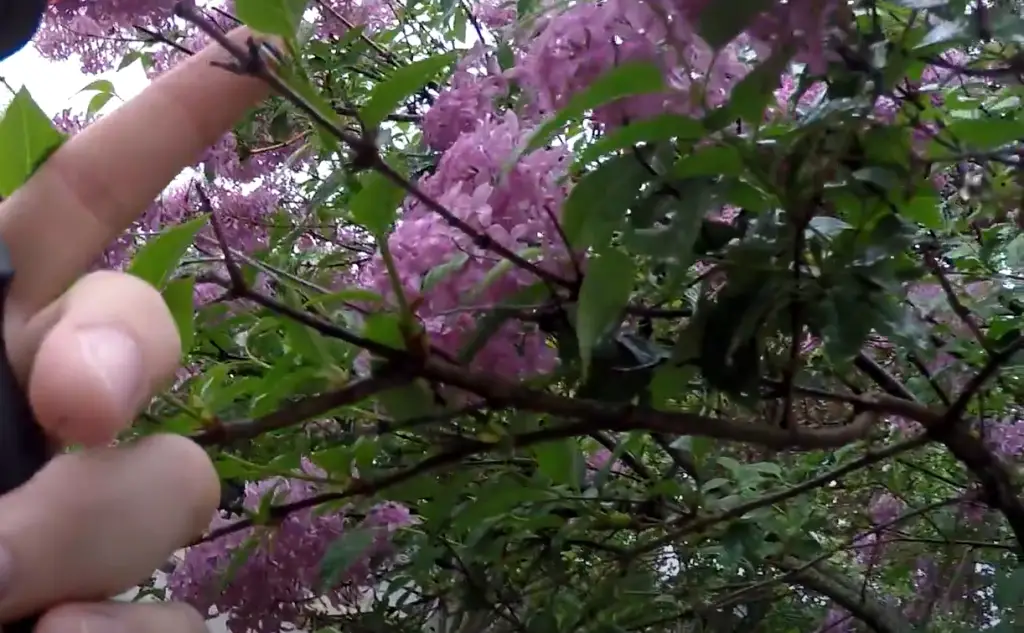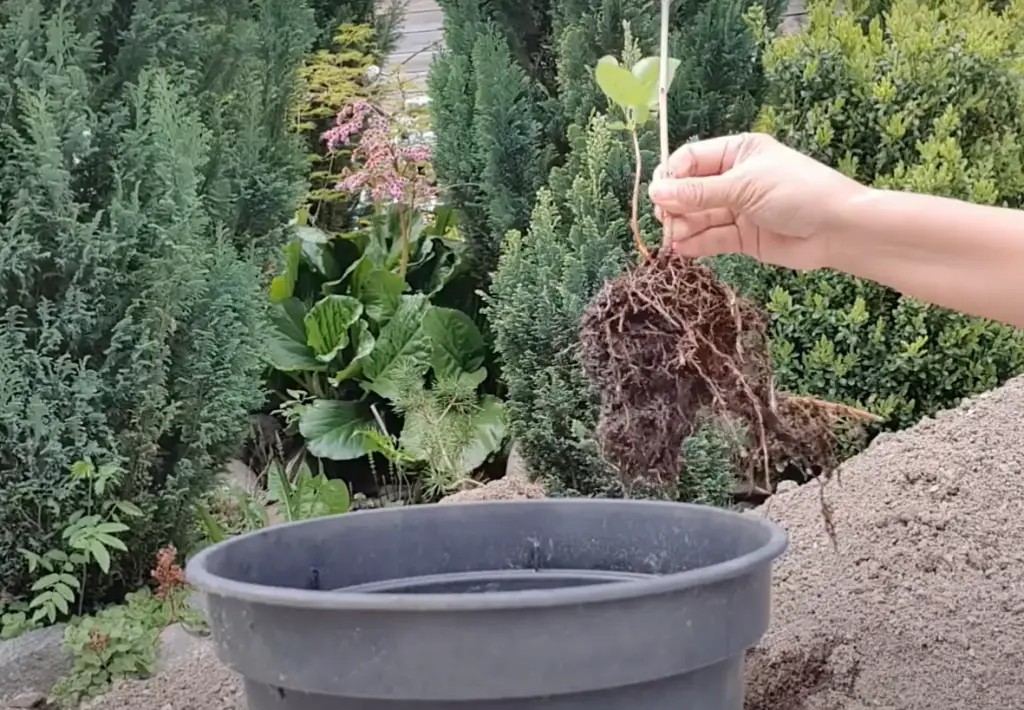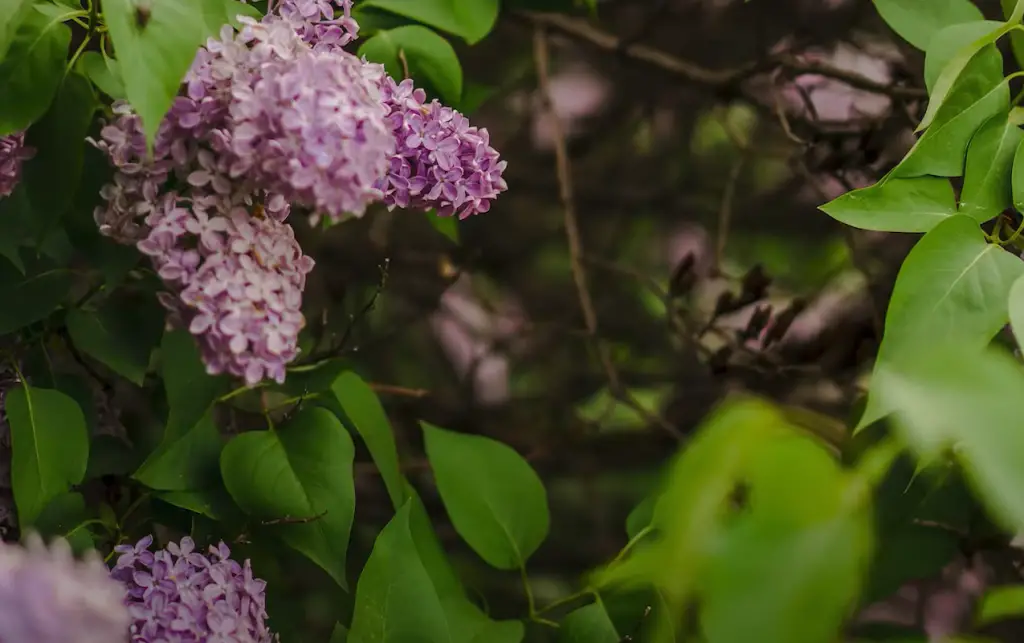If you want to create vibrant new lilac blossoms in your garden year after year, propagating them from existing plants is the way to go! Lilacs are a perennially classic shrub with their white, purple and pink flowers filling the spring air with heavenly fragrance. Propagating these fragrant perennials can be done through budding or cuttings which will give you rewarding results if done correctly. In this blog post, we’ll provide an overview of how to propagate lilacs so that you can enjoy growing beautiful lilac bushes for years to come!
What are Lilacs?
Lilacs are deciduous shrubs with fragrant, colorful flowers that bloom in the spring. They come in a variety of colors including white, pink, purple and lavender. Lilacs can grow up to 10 feet tall and need plenty of sunlight to thrive. In order for lilacs to produce abundant blooms year after year, they need proper care and regular maintenance.
Selecting the Right Variety of Lilac for Propagation
When propagating lilacs, you should select a variety that is suitable for your growing conditions and climate. If you live in a cooler climate, look for varieties that are hardy to zone 4 or lower.

Otherwise, opt for Lilac varieties with good disease resistance and heat tolerance. Consider the size of the mature Lilac bush when selecting a variety; some can reach heights of 8-10 feet tall! When it comes time to propagate your Lilac bush, make sure to take cuttings from healthy branches that have plenty of foliar growth and no signs of disease or stress. [1]
Preparing the Soil for Planting
Testing the Soil pH
Before planting lilacs, the soil pH must be tested.
Testing kits are available at most nurseries and garden stores or you can purchase an electronic meter that will provide more accurate readings over time.Adding Nutrients to the Soil
Once the correct pH range is determined, nutrients must be added to the soil to promote healthy growth. This process can begin several weeks before planting by adding organic compost and other nutrient-rich amendments such as well-rotted manure or bonemeal. Additionally, a slow release fertilizer specifically formulated for lilacs should be incorporated into the soil prior to planting.
Choosing a Location for Planting
When selecting a location for planting, it is important to find one that will provide adequate sunlight throughout the day. Lilacs need at least six hours of direct sun each day. They also prefer well-drained soil, so it is best to plant them in elevated areas or raised beds if possible. Additionally, lilacs should be given enough room to spread their branches and reach their full potential; a minimum of 5 feet (1.5 meters) between plants is recommended.
Planting the Lilac
Once all preparation steps are complete, the lilac can finally be planted! Be sure to dig a hole twice as wide as and just as deep as the root ball of the lilac sapling you’re planting. After placing the sapling in the hole, fill it up with soil and gently pat down to ensure the roots are securely held in place. Water thoroughly after planting and give an additional light watering once a week until the lilac is established. By following these steps, you will be well on your way to growing beautiful and fragrant lilacs!
How to Grow and Propagate Lilacs: Step-by-Step Guide
Taking Cuttings from an Established Plant
- Choose a healthy, mature stem from an existing lilac bush that has several nodes on it. These are the bumps on the stem where leaves, buds and flowers emerge from.
- Cut off a 6- to 8-inch section of the stem at a 45 degree angle with clean, sharp pruning shears or garden scissors. Make sure the cut is two inches below a node so you can identify it later on.
- Strip away all but two pairs of leaves at the top of each cutting, leaving just enough foliage for photosynthesis.
- Place your cuttings in warm water until you’re ready to plant them in soil or sand mixture. [2]
Planting and Growing the Cuttings
- Prepare the planting area in a small pot or flat container filled with a mix of half sand and half peat moss. Make sure to water your mixture until it is moist, but not soggy.
- Insert each cutting into the soil about two inches deep, making sure to keep track of what nodes you used for each one.
- Mist your cuttings with water daily and place the container somewhere sunny but sheltered from direct winds and strong sun rays.
- Monitor the growth process as new buds start to appear on your cuttings within six to eight weeks after planting them.
Collecting Seeds from Mature Lilac Blooms
- Collect the mature lilac blooms when they turn brown and be careful not to damage them while you pick them.
- Shake the petals off the flower heads until you are left with only the seed pods that contain small, black seeds inside.
- Store your collected seeds in a dry, cool area away from direct sunlight or moisture and wait until springtime to plant them.
Storing and Stratifying the Seeds
- Place your collected seeds in a resealable plastic bag and add some moistened peat moss or sand into the bag as well.
- Store the sealed bag in a refrigerator for at least six weeks to stratify them, which mimics winter conditions that are necessary for their growth once planted outdoors.
- Remove the stored seeds from the refrigerator and plant them immediately after stratification is completed.
- Follow steps B above to properly plant your lilac seeds outdoors for optimal growth and propagation success!
Planting the Stratified Seeds
- Prepare the planting area in a small pot or flat container filled with a mix of half sand and half peat moss. Make sure to water your mixture until it is moist, but not soggy.
- Plant the stratified lilac seeds two inches deep into the soil mixture and keep track of what nodes you used for each one.
- Cover the planted seeds loosely with topsoil and water them lightly every day until they begin to sprout out of the ground in early springtime.
- Monitor their growth process as new buds start to appear on your cuttings within six to eight weeks after planting them. [3]
Common Problems when Propagating Lilacs
Poor Growing Conditions
Lilac propagation is often unsuccessful if the plants are not planted in an area with sufficient sunlight and well-draining soil.

If the soil does not drain properly, it can lead to root rot which could potentially kill your new lilacs.
Pest Infestation
Lilacs are particularly prone to pests such as scale, spider mites, and aphids. If left unchecked, these bugs can significantly weaken the plants and even kill them if left untreated. Therefore, it is important to regularly check for signs of infestation and take appropriate action if needed.
Diseases of Lilacs
Lilacs are also susceptible to several fungal diseases, including powdery mildew and verticillium wilt. Both of these diseases can weaken or kill plants if left untreated. Therefore, it is important to remain vigilant in checking for any signs of infection and take immediate action if needed.
Transplant Shock
After successfully transplanting the lilac bush, you should ensure that it is well-hydrated and watered regularly during its initial growth stage. This will help to ease any potential transplant shock as it becomes established in its new environment. Mulching the base of the plant can also help to retain moisture and protect against weeds. In some cases, applying a balanced fertilizer once or twice per year can help promote healthy root growth. Additionally, pruning off dead branches or limbs may be necessary to encourage healthier regrowth in the first few seasons after successful propagation. Finally, keep an eye out for any signs of stress such as yellowing leaves which may indicate pests or diseases; treating these issues quickly and appropriately can help to ensure your propagation efforts are successful.
Fungal Infections
It is important to be aware that lilacs are susceptible to fungal infections, especially during wet and humid periods. This can occur through a number of ways such as splashing water from nearby sources or through poor drainage in the soil. If your newly propagated plants show signs of infection, you should act quickly to address the issue before it spreads further. Pruning away any infected branches and applying an appropriate anti-fungal treatment will help limit the spread of infection and also allow for healthier regrowth of your lilac bush in the future. With proper care and maintenance, you can ensure that your propagation efforts are successful and enjoy healthy blooms year after year. [4]
How Fast Do Lilac Cuttings Grow?
When propagating lilacs from cuttings, you should expect the plants to take approximately 4 – 6 weeks to become rooted and ready for transplanting into individual containers. The exact amount of time can vary depending on environmental conditions and the varieties of lilac being propagated. After they are transplanted in individual pots, they will need at least another 3 months before they have grown enough to be planted in a permanent location outdoors. With proper care, your new lilac shrubs can reach their mature size within two to three years.

To ensure healthy growth, it is important to keep them in a location that receives ample sunlight and maintain regular watering during the growing season. Additionally, several applications of fertilizer throughout the year will help increase root growth and promote flowering.
Do Lilacs Need Full Sun?
Yes, lilacs thrive in full sun. At least 6 to 8 hours of direct sunlight daily is best for maximum growth and bloom production. However, some varieties can also tolerate partial shade if they are well adapted to the local climate or have been bred to be more shade tolerant. Additionally, consider planting them in a location where they will receive morning sunlight – this will help ensure adequate warmth, which lilacs need for blooming.
Also, make sure there is enough space between plants for adequate air circulation; crowding can cause fungal diseases. Consider adding a layer of mulch around your lilac bush; this will help reduce weeds and keep soil moist. Lastly, make sure to give your plant enough water; lilacs need at least 1 inch of water each week during the growing season. With proper care, you should be able to enjoy an abundance of fragrant blooms!Can Lilacs Be Grown in Pots?
Yes, lilacs can be grown in pots and containers. However, it is important to ensure that the container is large enough to accommodate the plant’s root system and has adequate drainage holes at the bottom.

The pot should also be able to hold a substantial amount of soil and provide enough space for the plant’s branches and leaves to spread out and grow. When selecting a pot or container for growing lilacs, it is best to opt for one with an organic material such as terracotta. This will help regulate moisture levels in the soil and allow excess water to drain away easily. Additionally, make sure you choose one that is lightweight so you can move your potted lilac around without difficulty if needed.
This type of soil is specially formulated to provide plants with the nutrients they need and promote optimal drainage. After planting your lilac, make sure you water it regularly so that the roots are kept moist but not soggy. To ensure that your potted lilac thrives, place it somewhere where it will get plenty of sunlight and be sure to keep an eye out for pests or disease issues. With proper care and maintenance, your potted lilac should thrive! [5]FAQ
Can you plant lilac cuttings directly in the ground?
No, you should not plant lilac cuttings directly in the ground. Cuttings should first be rooted in a pot or starting tray with a well-draining soil mix. Once they have established roots, they can then be transplanted into the ground.
How deep should you plant lilacs?
When planting lilacs, it is important to plant them at the right depth. Lilacs should be planted slightly deeper than they were originally growing in their nursery pot, but no more than an inch or two (2-3 cm) deeper.

This will help ensure that the roots of the lilac are properly anchored into the soil and can access adequate moisture and nutrients for healthy growth. When planting a bare root variety, make sure that the crown is just below the soil line. For containers, spread out and loosen the tightly compacted rootball before planting. Planting too deep can cause severe damage to your lilac bush so make sure you take care when doing so!
Can I root lilac cuttings in water?
Yes, you can successfully root lilac cuttings in water. To do this, take a 6-inch (15 cm) cutting from an actively growing branch and strip off all but the top two sets of leaves. Place the cutting into a jar filled with room-temperature water and wait for roots to form over the next several weeks. Once rooted, transfer your new lilac plant into soil and keep it well watered until it becomes established. With proper care, your hard work will pay off with beautiful blooms in no time!
Can I propagate lilacs from layering?
Yes, you can propagate lilacs through layering as well. To layer a lilac bush, select a low-growing side branch and gently bend it until the tip is touching the ground. Dig a shallow trench beside the bent over branch and bury that section up to its base. Secure with a rock or brick if necessary. Over time, roots will form on the buried section of stem while the top portion continues to grow. Once rooted, cut off this new plant from the parent shrub and transplant into soil. You now have your own propagated lilac bush!
What is the easiest way to propagate lilacs?
The easiest way to propagate lilacs is by layering. Layering is when a part of the stem (called the layer) is bent down to the ground and covered with soil. The bent portion will then root after some time, and once it’s rooted, it can be cut from its parent plant and grown as an independent plant. This method works best for semi-woody plants like lilacs because they are better able to withstand being uprooted than more delicate plants like annuals or perennials. Additionally, this propagation technique does not require any special equipment or tools – all you need is a shovel! To begin propagating your lilac bush using this method, start by finding healthy stems that have been on the plant for at least a year. Next, using your shovel, dig a shallow hole around the stem you’ve chosen. The purpose of this is to make it easier to bend it down and cover with soil later on. Then, carefully bend the stem downwards towards the ground – be sure not to break it! Once you’ve done that, cover the bent stem with topsoil or potting mix. Pat down lightly to ensure good contact between the soil and stem. Finally, water well and leave in place for several months until new roots have formed and taken hold in the soil. Now your newly propagated lilac bush is ready for transplanting!
Can lilacs be propagated from cuttings?
Yes, lilacs can be propagated from cuttings. This is a relatively easy method of propagation that can be done at any time during the summer months when there is enough new growth on the plant to take a cutting.

All you need to do is select a healthy stem with several sets of leaves and make a sharp angled cut just below a leaf node. Remove the lower leaves and dip in rooting hormone powder if desired before planting in a well-draining potting soil mix. Water the soil thoroughly and place the cutting in bright indirect light for best results. Keep the soil moist but not wet by checking frequently for moisture levels – it usually takes anywhere between 4-8 weeks for roots to form. Once this happens, simply transplant into a larger pot and care for your new lilac shrub as normal!
Useful Video: How to Prepare Lilac Plant Cuttings to Root
Conclusion
Propagating lilacs is a great way to increase your garden and get more of the fragrant blooms you love. Successful propagation requires patience, effort, and attention to detail. Start by collecting healthy cuttings of about 4 inches in length during late spring or early summer after flowering has stopped. Set them aside in a cool dark place for 24-48 hours before planting them in well draining soil. Finally, keep the soil evenly moist, use mulch around the base of the propagated plants, and provide plenty of sunlight for best results. With these simple steps, you can successfully propagate your own lilacs from cuttings!
References:
- https://www.homesandgardens.com/gardens/how-to-propagate-lilacs
- https://www.gardenerbasics.com/blog/how-to-propagate-lilacs
- https://horticulture.co.uk/lilac/propagation/
- https://www.flowerpatchfarmhouse.com/propagate-lilacs-suckers/
- https://empressofdirt.net/propagate-lilacs/










Leave a Reply
View Comments